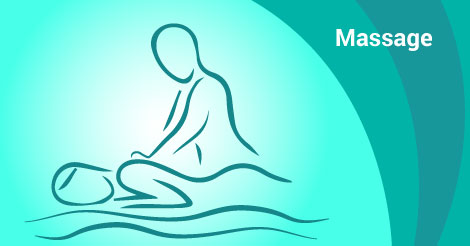Massage

It consists of manual techniques that include applying fixed or movable pressure, holding, and/or causing movement of or to the body, using primarily the hands but sometimes other areas such as forearms, elbows, or feet. These massage techniques affect the musculoskeletal, circulatory–lymphatic, nervous, and other systems of the body.
Because massage usually involves applying touch with some degree of pressure, the massage therapist must use touch with sensitivity to determine the optimal amount of pressure appropriate for each person.
Touch used with sensitivity also allows the massage therapist to receive useful information about the body, such as locating areas of muscle tension and other soft–tissue problems.
Mechanism of Massage
A white fluid called lymph carries impurities and wastes away from the tissues and passes through gland–like structures spaced throughout the lymphatic system that act as filtering valves. The lymph does not circulate as the blood does, so its movement depends largely on the squeezing effect of muscle contractions. Consequently, inactive people fail to stimulate lymph flow. On the other hand, the stimulation caused by vigorous activity can be outstripped by the increased waste produced by that activity. Massage can dramatically aid the movement of lymph in either case.
The individual cells of the body are dependent on an abundant supply of blood and lymph because these fluids supply nutrients and oxygen and carry away wastes and toxins. That’s why good circulation is so important to our health and why massage can be so beneficial for the entire body due to its effect on circulation alone.
Massage
Featured Herb

Garlic: Purported to help treat infections and rid the body of parasites. Good for spasms and cramps. read more…
Did You Know Jala Neti ?
 You may be able resolve your problems due to air pollution by Jala Neti (Nasal Wash)
read more…
You may be able resolve your problems due to air pollution by Jala Neti (Nasal Wash)
read more…
Health Professional's Negligence
Records of published articles in the newspapers helps common people about precautions to be taken while seeking the services from health professionals and also helps health professionals to rectify the negligence.read more…





